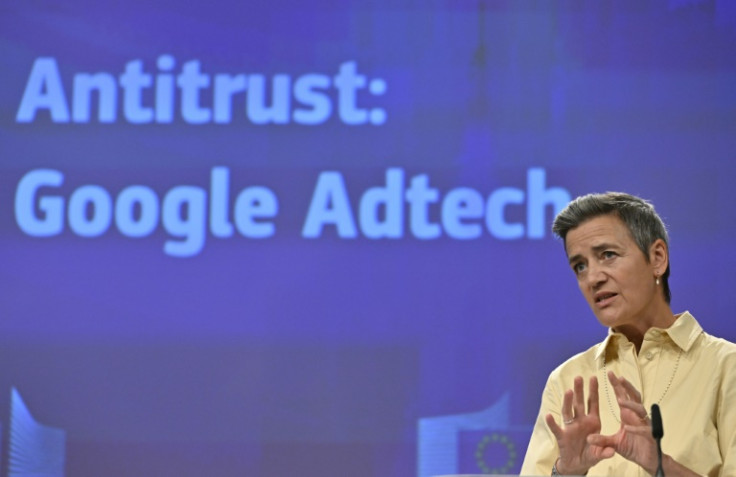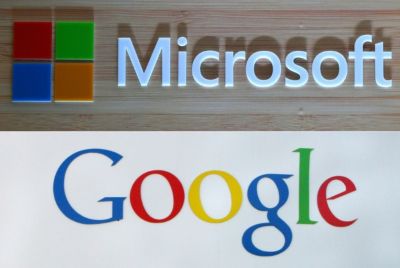Consumers targeted by new AI-generated ads revealed in new survey
The Menlo Security survey highlights consumers' lack of awareness about AI-generated ads and the risk of malvertising, increasing the need to protect against evolving cyber threats.

The digital landscape is rapidly changing, with artificial intelligence (AI) emerging as a dominant influence in many facets of our online interactions. A recent independent poll, conducted by CensusWide, was done on behalf of the cloud security leader Menlo Security, demonstrated an alarming lack of understanding among UK consumers about the dangers of AI-generated internet marketing.
Surprisingly, one in every three customers believes that AI is responsible for more than half of the advertisements they see on websites and social media platforms. Nevertheless, their lack of understanding of the accompanying risks exposes them to the growing threat of malvertising, a sophisticated method in which malware is inserted in seemingly genuine advertisements, making it so consumers can be deceived into scams.
The rise of AI technology has brought about a significant transformation in the realm of online advertising. Through sophisticated algorithms and machine learning, advertisers have been able to create targeted and personalised ads tailored to individual consumers. This level of personalisation often leads to conversion rates for advertisers, making it an appealing approach for many businesses due to the increase in profit and customer engagement.
However, whilst AI does offer these numerous advantages for companies to reach and connect with their audience in new and innovative ways, it also introduces potential risks that many consumers are unaware of.
For example, results from the survey revealed various misconceptions and a lack of understanding among consumers regarding the risks involved with interacting with online advertisements. Surprisingly, a sizable 70 per cent of respondents are unaware that clicking on a brand logo can result in malware infection.
Despite an explicit increase in brand impersonation attempts against well-known corporations such as Microsoft and Google, this lack of awareness persists. Furthermore, nearly half (48%) of respondents are unaware that social media ads can represent a risk, while 40 per cent are uninformed of the risk linked with clicking on pop-ups and banners. In comparison, the majority (73%) recognise the risk of malware disguised within email links.
Regardless of the limited awareness, the survey did reveal that a significant portion of consumers continues to engage with online advertisements to some extent. However, the increasing use and perfection of AI-generated ads make it challenging for users to identify malicious content, thereby jeopardising their cybersecurity.
When users unknowingly encounter infected ads while browsing websites, they inadvertently expose their devices to malware. On average, one out of every 100 online ads is malicious, but this number is expected to rise as AI tools and software become more accessible and user-friendly.
Moreover, the survey highlights that nearly one-third (31%) of all respondents lack confidence in their ability to recognise and avoid malvertising threats. This percentage increases to 40 per cent among women and 41 per cent among individuals aged 55 and above, suggesting that specific demographic groups may be particularly vulnerable to these evolving cyber threats.
Tom McVey, AI security spokesperson at Menlo Security, commented about this issue saying: "The growing prevalence of AI-generated content online will only fuel highly evasive threats such as malvertising. AI used maliciously can not only generate convincing text, but it can also generate and transform images which can be made to appear like popular brands or logos."
He concluded from their research that "you're only 3 to 7 clicks away from malware online. When users click a false link, cybercriminals can inject their malware onto the victim's device, most commonly for financial gain. With malware-as-a-service and AI-generated text and images easily accessible, even attackers with little or no skills can create convincing ads – we're expecting a big uptick in malvertising as a result".
Thus, the warning that the growing number of AI-generated content on the internet could lead to a spike in highly deceptive malvertising, in which cybercriminals can quickly construct attractive adverts using AI-generated text and pictures is worrying and something that must be addressed by companies. Without so they are placing consumers at risk of malware infection with just a few clicks, even on trustworthy websites.
How to protect yourself when online
To protect yourself from malvertising, it is essential to adopt a cautious approach when interacting with online ads. Firstly, carefully examine the URL by hovering your mouse over the ad and checking if it matches your expectations. Threat actors often employ clever techniques, such as replacing characters, to create convincing domain names.
Secondly, assess the authenticity of the brand logo used in the ad. A copied logo may exhibit distortions, pixelation, or unusual background colours, indicating potential illegitimacy. Thirdly, be mindful of the actions requested by the ad.
Legitimate brands typically aim to measure impressions, while malicious ads often feature aggressive calls to action like 'click here' or 'buy now'. Exercise caution when encountering such ads. Additionally, maintain a cautious attitude towards ads, regardless of the credibility of the website hosting them. Even reputable news sites are not immune to malvertising.
Lastly, be aware of the risk of malware encountered through redirections. Clicking on multiple ads increases the likelihood of encountering websites with lax vetting procedures, as highly credible websites usually don't rely heavily on banner ads. By applying these precautions, you can better safeguard yourself against the threats posed.
It is still relevantly clear that there is a significant knowledge gap among consumers concerning the prevalence of AI-generated online advertisements and the associated risks. As AI tools and software become more accessible, the threat of malvertising is expected to rise, demanding increased awareness and caution from internet users to have greater knowledge about the consequences of their actions while online.
However, by following recommended precautions and maintaining vigilance while browsing the web, we can better protect ourselves online as a community and overall move to tackle any attempts by cybercriminals.
© Copyright IBTimes 2025. All rights reserved.





















